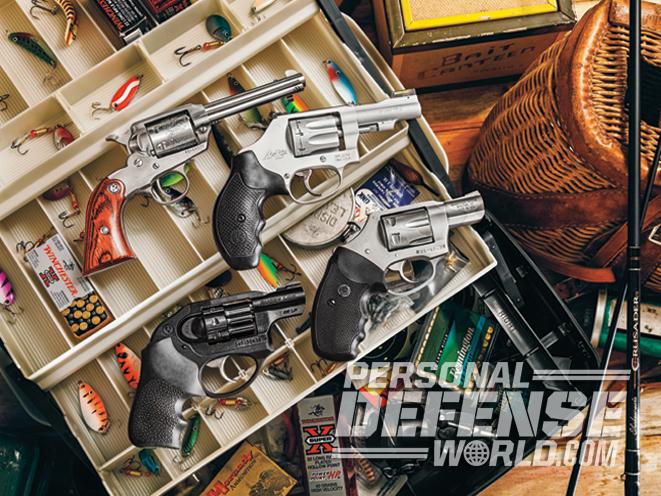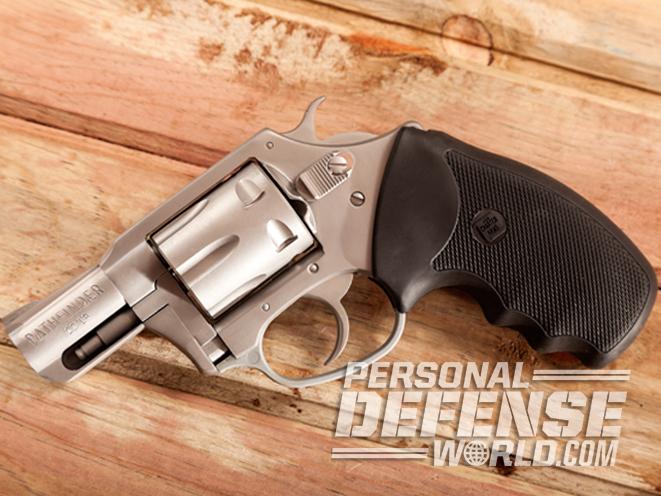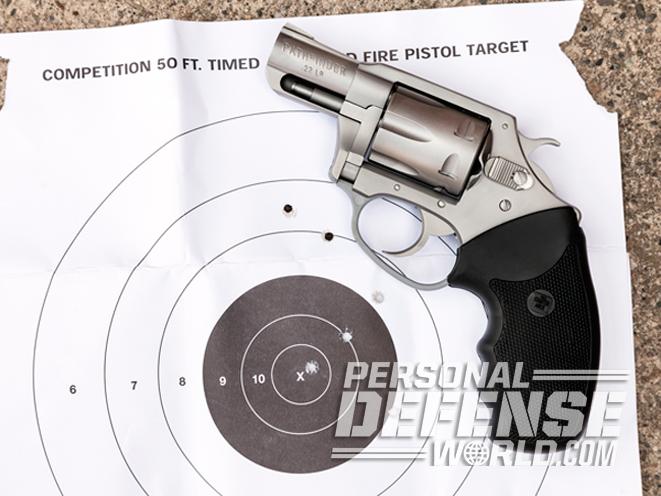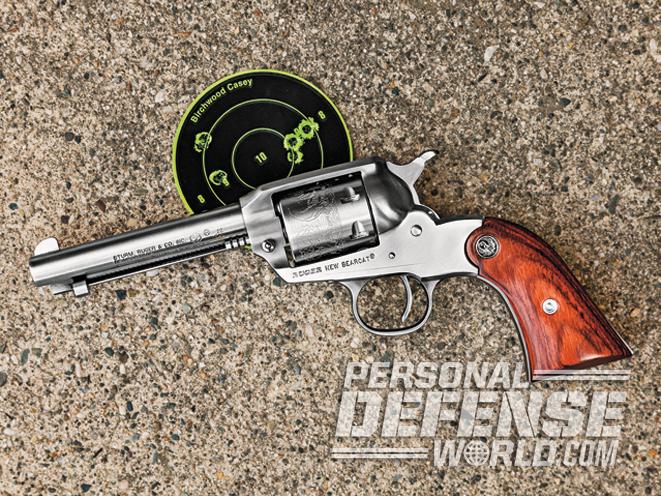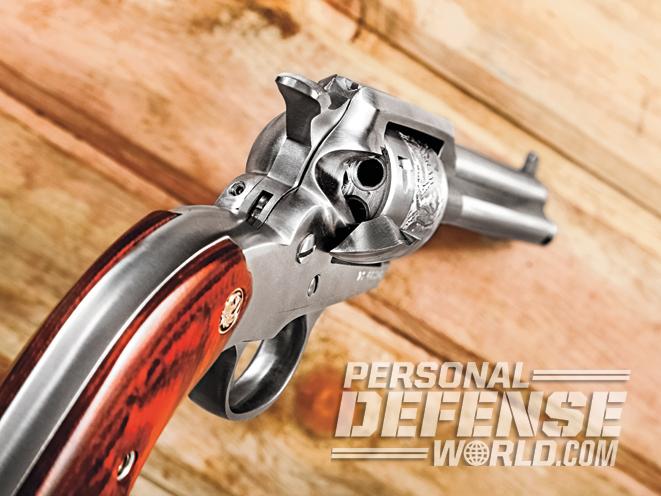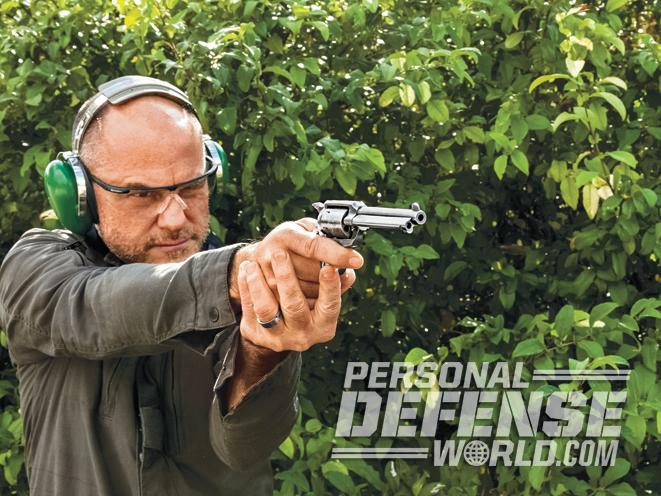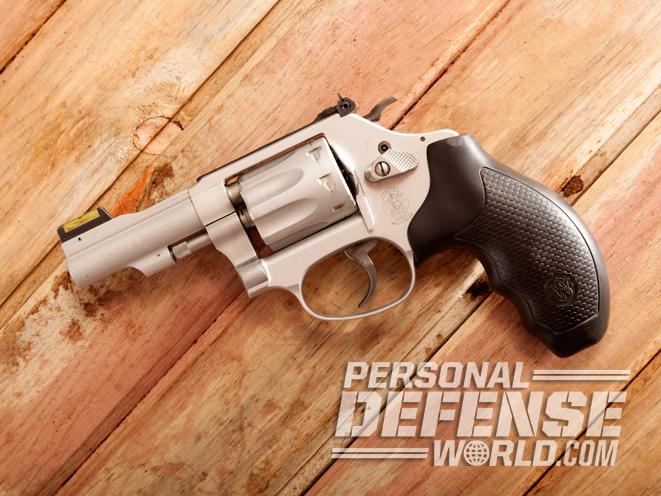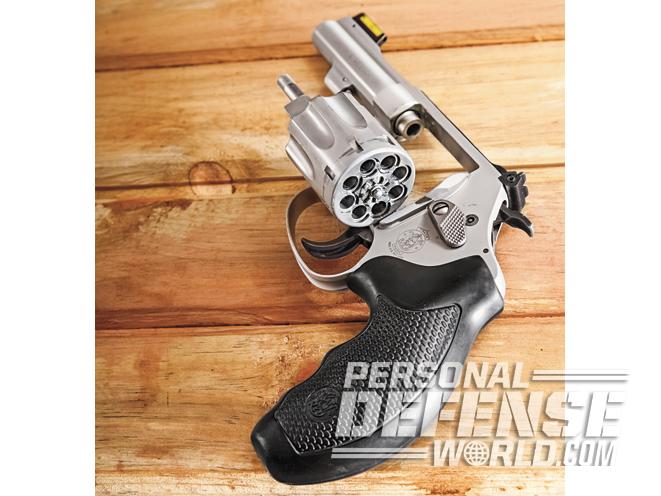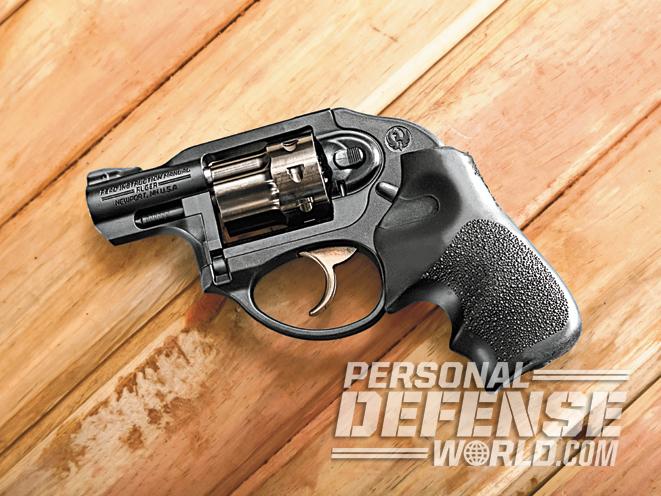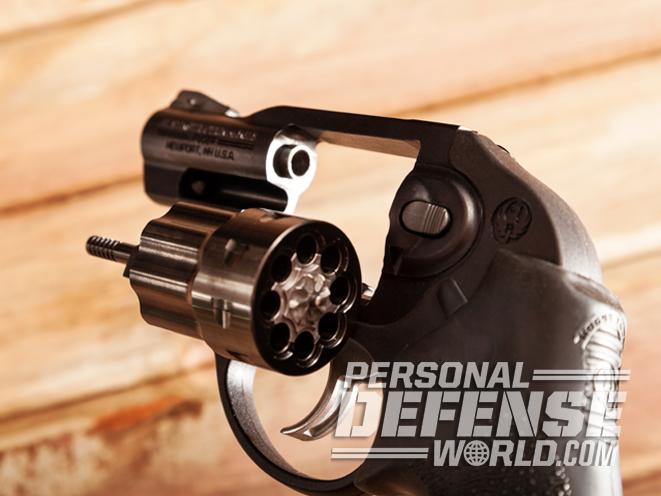Many years ago, I was fishing one of Utah’s mountain streams. Suddenly I discovered the rocky area was awash in bad-tempered rattlesnakes. Ordinarily I’d simply walk wide around angrily buzzing reptiles, but this time there seemed to be a snake wherever I wanted to step. I kept a careful eye out and watched where I placed my feet. There may have been a den nearby, but I was definitely on the defensive. I found it hard to relax and enjoy my fishing.
I decided enough was enough, and within the week I’d acquired a Charter Arms Pathfinder and a shoulder holster to carry it in. The little stainless steel revolver was compact and weighed only 19 ounces. I tested it with some .22 rimfire shotshells and was pleased to learn it delivered better snake-killing patterns than my .38 Special did, at a comfortable distance of 6 or 8 feet.
Protecting The Path
Advertisement — Continue Reading Below

The stainless steel Pathfinder resisted corrosion when it rode in my fishing tackle box—an important consideration in this rust-promoting environment. That became its home for the next several years, and it served yeoman duty as protection against snakes, aggressive skunks (that might be rabid) and as a fun plinking tool. When I tired of fishing, I could set my rod aside and unlimber the Pathfinder. After some informal target practice, I was ready to fish again.
RELATED STORY: Swamp King – The Charter Arms Gator Revolver
The Charter Arms Pathfinder is 100-percent American made. It has a 2-inch barrel and a fixed sighting channel. In spite of its rudimentary sighting equipment, the little gun shoots to its point of aim, and when fired single-action is capable of 3-inch groups at 25 yards. Its single action trigger breaks crisply at just 3 pounds (the double-action pull was too heavy to be weighed on my trigger scale). A safety bar transmits the force of the falling hammer to the firing pin only when the trigger is pulled. This prevents an accidental discharge if a cocked gun is dropped.
Advertisement — Continue Reading Below
The Pathfinder features a checkered rubber grip with finger grooves. It fills my hand very nicely, making it easy to hold the little revolver steady. The gun’s shallow channel sights are rudimentary but easy to see. This is a nice little gun that works reliably, even after several rounds had been fired in a hurry. At a suggested retail price of $365, this seems to be real bargain. (http://www.charterarms.com; 203-922-1652)
Classic Sixgun

Another compact gun I find really appealing is Ruger’s New Bearcat. Originally introduced in 1958, the original Bearcat has gone in and out of production over the years, and it has now undergone some important changes. The New Bearcat I’m now using is a handsome handgun that resembles a greatly scaled-down version of Ruger’s centerfire Blackhawk.
Advertisement — Continue Reading Below
The New Bearcat’s six-shot, fluteless cylinder has well-executed roll engraving featuring both a bear and a big cat, along with the “Ruger Bearcat” legend. Laminated hardwood grips harmonize well with the gun’s satin stainless finish. The finish on my test gun was flawless. A hammer-block safety prevents the gun from firing unless the trigger is pulled. Opening the loading gate and thumbing the hammer to half-cock allows the cylinder to rotate clockwise for loading. The hammer spur is sharply grooved, providing your thumb a secure purchase. Five pounds of trigger pressure drops the hammer.
RELATED STORY: Strength & Power – The Ruger Super Redhawk Revolver
The barrel is a slim 0.5 inches in diameter. The rear sight is a fixed groove in the topstrap that pairs with a front sight blade. An even newer version of this gun comes with an adjustable rear sight. While this gun is practically petite (the grip barely accommodates large hands), it’s a solid-feeling sixgun that promises longevity. Its relatively substantial weight (compared to the other .22s mentioned here) gives the gun more authority than other compact tackle box revolvers I’ve used. With ammo it likes (Winchester’s Xpert .22, for example), it’s capable of 2.5-inch groups at 25 yards.
Advertisement — Continue Reading Below
Because it’s a western-style single-action revolver, each chamber must be emptied of expended brass one round at a time, using the long ejector rod located under the barrel. Similarly, the cylinder must be manually rotated into position as each new round is inserted into each chamber. In other words, it takes longer to load (or unload) the New Bearcat than it does to charge double-action revolvers listed here. That’s not a serious consideration for a gun intended for plinking and small game hunting, rather than self-defense. (http://www.ruger.com)
Lightweight Kit

I recently acquired a Smith & Wesson Model 317 Kit Gun. Weighing in at a bare 12.5 ounces, this hybrid handgun is only half as hefty as the New Bearcat, which registers 24 ounces on my scale. Instead of stainless steel, this little gun is constructed of Smith & Wesson’s proprietary aluminum alloy, with a thin steel insert in the barrel. This gun is corrosion resistant without the heft of an all-stainless-steel revolver.
Advertisement — Continue Reading Below
The gun’s satin finish appears to be the result of bead blasting. It’s a handy, handsome gun without the glare of polished stainless steel. The black rear sight is adjustable for windage and elevation, while the front sight features a highly visible Hi-Viz green insert. This is pinned in place, allowing for easy replacement if the green sight doesn’t fit your needs. The double-action trigger was smooth but too heavy to measure on my RCBS trigger-pull scale. In contrast, the single-action trigger regularly tripped crisply at exactly 3 pounds, with no discernable take-up or overtravel.
RELATED STORY: A Brief History of the Smith & Wesson .357 Magnum Revolver
Regular cleaning is important to keep this gun functioning freely. Like other S&W revolvers, the cylinder of the Model 317 Kit Gun locks up both on the crane and at the rear of the cylinder. Chambers are individually recessed.
Advertisement — Continue Reading Below
Fired single action from sandbags at 25 yards, the little Kit Gun would group five rounds into a 3-inch bullseye. Double-action accuracy was a lot more “iffy.” Groups ran from 5 to 7 inches across, not the ideal performance for taking small game. The main attractions Kit Gun ownership offers are delightfully light weight and the Smith & Wesson marquee. MSRP is $759. (http://www.smith-wesson.com; 800-331-0852)
Trail Snubbie

Ruger’s LCR in .22 LR is an unusual little gun. There’s no external hammer you can cock for single-action shooting. What looks like a conventional hammer shroud actually houses some of the gun’s firing mechanism, including Ruger’s patented recoil-reducing cam. Then there’s the black, stainless steel cylinder that tapers to encompass the eight rounds it chambers. The oddly shaped cylinder, along with the barrel sleeve and trigger, are stainless steel. The monolithic frame wears Hogue Tamer Monogrips, which provide surprisingly good control.
Advertisement — Continue Reading Below
RELATED STORY: 13 Dependable .22 Rimfire Handguns
Unlike Ruger’s New Bearcat, the lack of an external hammer means you can shoot this gun only in double-action mode. The 10-plus-pound trigger operates fairly smoothly, with some stacking noticeable just before the gun fires. This double-action-only mode makes target-grade groups difficult. The sights are easy to see, thanks to a contrasting white strip on the front sight blade. However, I had trouble firing 15-yard, five-shot groups that grouped tightly enough for downing small game. With birdshot loads, the gun was sufficiently precise for killing rattlers or cottonmouths at safe shooting distances. It’s not a long-range handgun, but it handles close work just fine.
One problem I encountered was in shooting hollow-point ammunition. High-velocity hollow-points sometimes proved balky in the little revolver. If you shoot this gun a lot at the range, regular cleaning is needed to ensure reliability. This neat little revolver fits handily into a pocket or tackle box. Thanks to its multi-component construction, it should do a great job of resisting corrosion.
Advertisement — Continue Reading Below
All four of these compact, lightweight revolvers are a lot of fun to shoot and would make great, unobtrusive trail guns and fishing companions. I like to have a handgun with me whenever I spend time outdoors, and these little rimfire revolvers nicely fill the bill. (http://www.ruger.com)
